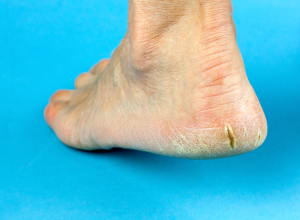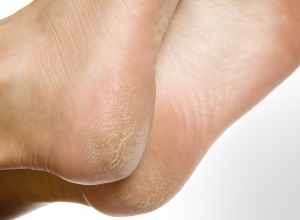
Fissure
A fissure is a crack, tear, natural division, groove, deep furrow or elongated cleft in various parts of the body. A heel fissure is characterized by dry, flaky cracks in the posterior part of the foot that can sometimes be painful and bloody.
Causes
Heel fissures can be present for a variety of reasons, including living in a dry climate, frequently wearing open-backed shoes and sandals, consistently walking barefoot and carrying extra weight on your body. Sometimes heels fissures can be caused by inactive sweat glands, which leave your feet unusually rough and dry, or by dyskeratosis, which is an abnormal formation of the keratin layer. Other conditions that could lead to heel fissures include athlete’s foot, eczema, diabetes, hypothyroidism, Dons syndrome, venous stasis, lymphoma and malnutrition.
Treatment and Prevention
Most heel fissures will disappear on their own in just a couple of weeks if they are properly moisturized. Applying good quality lotions or foot creams to your heels twice daily and covering with cotton socks can speed up healing of a fissure, as can partaking in regular foot soaks followed by scrubbing the layers of thick, dead skin with a pumice stone. If pain persists, you can try using orthotics placed inside your footwear.
It is important to treat heel fissures early, as the longer the cracked skin is left dry, the higher the chance it could become infected and the higher the chance you’ll have to see a podiatrist or other health care professional to help in heel fissure removal.
The best way to avoid heel fissures is to take good care of your feet, which includes keeping them clean and moisturized. You should also avoid consistently walking barefoot and wearing open-backed shoes and sandals.
People with diabetes, poor circulation and/or immunosuppressant diseases should consult with a health care provider if they think they have heel fissures, as podiatrists warn they are vulnerable to risks associated with the foot condition.
For more on heel fissues, read: Treatment And Prevention For Cracked, Dry Heels (Heel Fissure)
Notice concerning medical entries:
Articles having medical content shall serve exclusively for the purpose of general information. Such articles are not suitable for any (self-) diagnosis and treatment of individual illnesses and medical indications. In particular, they cannot substitute for the examination, advice, or treatment by a licensed physician or pharmacist. No replies to any individual questions shall be effected through the articles.













